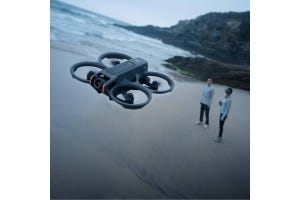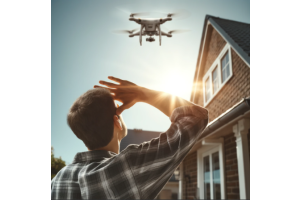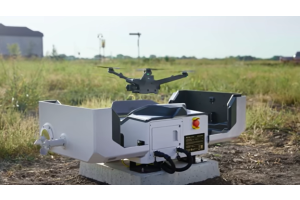
On October 15, 2019 in Central Minnesota, six year old Ethan Haus went missing in the woods for over 10 hours after running off after school to play with his dog. By the time night came and the temperature fell to 30 degrees, Ethan and his dog, Remington, were still missing.
Steve Fines, a pilot, photographer, and certified thermal drone operator, saw a Twitter message that the Sherburne County Sheriff's Department had posted regarding the missing child. Fines packed his gear and arrived at the command center of the search team with a Zenmuse XT2 camera fitted with FLIR thermal imaging technology.
However, his assistance was declined at that time, as a state patrol helicopter equipped with a thermal camera was flying above the area, and searchers believed the drone would be redundant. Eventually, the helicopter was called off without finding the missing boy, so Fines stayed behind in case he could be of assistance.
Around 10 PM, Fines was allowed to fly his drone to search for the lost pair. Around 1:30 AM, some of the more than 700 local volunteers searching by foot discovered a child's footprint in a cornfield not far from Fines' position. Fines narrowed his search to the cornfield based on this clue, and he soon spotted what appeared to be a dog’s head on his thermal camera. Fines directed ground crews to the area, hoping it might be Remington, the missing dog.

A drone equipped with the Zenmuse XT2 payload.
As it turned out, the shapes seen by him were the dog and boy who had gone missing, and the rescuers located them within minutes. Despite being cold, Ethan was otherwise unharmed.
Fines was able to locate Ethan and his dog thanks to an exemption he received from the Federal Aviation Administration (FAA) allowing him to fly the drone at night.
Despite some hesitancy to deploy Fine's thermal-equipped drone, this rescue is another superb example of how drones with thermal imaging capabilities can be invaluable tools in search and rescue. Law enforcement and other public safety agencies worldwide are increasingly turning to drones as force multipliers in their operations.
In In recent years, drones have increasingly been used to save lives. From delivering medical supplies to remote areas to rescuing stranded hikers, drones are proving to be a valuable tool in more than just search and rescue operations. This trend is only set to continue as drone technology improves. With advances in sensors and artificial intelligence, drones are becoming more and more capable of autonomously completing complex tasks.
In the future, it is likely that drones will play an even bigger role in saving lives, whether it is by delivering food, water or medicine in the aftermath of a natural disaster or even delivering floatation devices to a person in need of a water rescue. Previously, in situations like these, a human life was put at risk in order to save another. Tragically, sometimes the person being sent in to help would end up needing rescuing themselves. With drones, we now have a tool that can be used to save lives without putting another human life at risk
The use of drones in search and rescue is a rapidly growing field, with new applications being found all the time.
If history has taught us anything, it is that drones are here to stay and as important life saving tools, they are only going to become more and more commonplace in our society..
To learn more about thermal drones and how they can help your organization, please visit DSLRPros.com or call 877.299.1075 | (Mon - Fri 7am - 5pm PST) to speak with one of our thermal drone experts.





